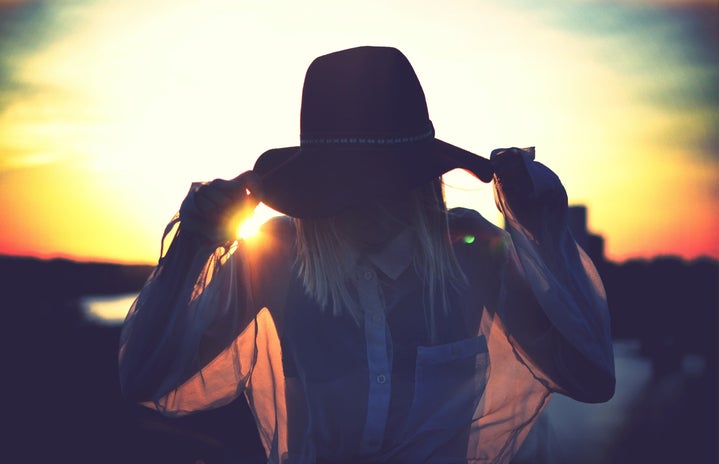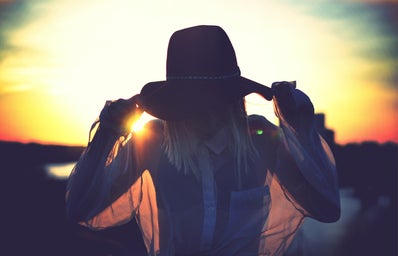Fashion has always been around to create a pleasing look for the eye. While being able to correlate pieces together for the right look may come natural to some, to others it’s more of textbook fashion—follow the rules, don’t take any risks. Then there are the talented designers who can create the pieces from personal inspiration and generate fashion trends that began as early as the 1920s.
After traveling to Milan and Paris (and seeing Europe in general), one of the fashion capitols of the world, my fashion sense grew immensely. I was exposed to many new looks and was inspired by the different scenery.
While being in Prague, we learned about architectural styles and how those designs inspired the majority of the historical buildings that still stand in that city today. For example, Cubism, Art Deco, and Surrealism were the most popular architectural styles and later became the main influences on fashion. Inspiration was found on every corner. Besides architecture, archeological and colonization finds were also inspirations for fashion trends. They sparked the exotic print trend, which is currently still very much in style.
Prague has its unique style. It ranges from the hipster look to a very classy 1950s look. Although, it is mainly the young people who dress fashionably; the older generations are more about comfort than style. They are also more reserved in their clothing due to having lived in the communism years, which having to dress more conservatively and rationally was a necessity. Geographical location and its events are the main components of what style a certain individual will have. And for my fellow feminists out there, like the American Home Companion stated in 1914, “Have you ever stopped to think that the serious subject of woman’s progress and the frivolous subject of woman’s clothes are very closely connected?” This bit of information will help you think more about the relationship that those two topics have with each other.
For the fashionistas (or if you’re merely interested), here is a bit of history that I learned in Prague through its amazing fashion museum and historians, which documents the most important seven decades that determined what is fashion today.
1920s This decade became the birth of modern fashion. The events that inspired the rise of vogue were:
- Women entered the world of work
- Society’s youth became the leaders in fashion and style
- Women rejected the corset to embrace their newfound freedom; basically, fashion as a whole, focused on the freedom of movement in this decade.
During this period, the infamous flapper dress had its peak and hemlines were shortened; women were beginning to express their independence and rebellion against gender stereotypes. This was the era where the promotion for cigarette smoking and cocktail drinking for women began.
Chanel’s little black dress was introduced in 1926, which has remained a go-to statement frock since. I personally love my little black dress and can wear it to many different outlets. That’s its purpose.
So to conclude this decade, it was fashionably defined by the flapper and black dress, short hemlines, exotic prints, the cloche hat, and drop waists.
1930s There were several events that inspired the fashion and new trends of this era:
- The proliferation of new technologies
- The idea of escaping into Hollywood’s dream world
- Movie stars became the trendsetters
- Hollywood and fashion become intertwined
- The expansion of the cosmetics industry
- The use of makeup was promoted through film
- Designers began to use fabrics such as rayon, nylon, and viscose (sensitive fabrics used for pantyhose and such)
The styles that defined this decade were “the Hollywood look,” natural waistline, hemlines dropped, clothes were romantic and elegant, shoulders widened, and outfits always included a hat and gloves.
1940s This next decade becomes time changing throughout history, thus causing its fashion. It was the era of World War II, where the rationing of clothing and fabrics was important. The aim was to conserve raw material, produce efficiently, and keep the prices down. Several significant events happened:
- European fashion was no longer available in the U.S. Americans had to turn to their own dressmakers for clothes.
- The idea of “women’s power” began; millions of women were in active duty during the war.
Some women painted their stockings on with tanning lotion, cocoa, or even gravy. Remember, the idea was to conserve material. Although, not everyone was going through this rough patch. French women expressed their independence by cultivating an extremely extravagant look. They created extreme hats to provoke and prove that Paris alone had the flair for creative fashion.
The styles that defined this era were practical and modest clothes, skirts at or near knee length, simply cut blouses and square shouldered jackets—uniform style. There was an emphasis on the waist. And for those that could afford the luxurious lifestyle, feathers, felt flowers, and beading on hats and clothes were important, as well as headscarves or turbans.
1950s During this decade, society is longing for the classic gender roles and old conventions, but the teenage generation refuse to dress like their parents, which started the adolescent section in fashion. First, significant events:
- The fashion industry begins to flourish
- Media becomes the source of trends
- Jeans and bikinis become popular
- Fitting rooms begin
Since the media started becoming the reference for fashion, many looked upon European actresses, in particular, Brigitte Bardot, who is recognized for popularizing bikini swim wear in early films such as Manina (1952). Jeans become a fashion and gender statement as well. They were taken from practical work wear to a symbol of rebellion and sexual desire.
The 1950s are defined with glamour, exaggerated feminine, soft shoulders, hourglass silhouettes, petticoats and corsets, long coats, hats with small veils, gloves, matching outfits, cat eye sunglasses, pillbox shaped hats, and high heels.
1960s This decade was all about total freedom in matters of style. Designers actually took street fashion to the runway than the usual, other way around.
- The youth revolution and counterculture
- It was the space age—NASA.
- Women’s liberation
- Sexual revolution
- Gay and lesbian revolution
- Invention of “The Pill.”
- Economic boom—flourishing of culture and fashion boutiques.
This was the decade where the mini skirt makes its debut as well as many others. This era was defined by many styles, such as futuristic designs (space looking type clothes), clean-tailored looks (similar to what The Beatles wore), rocker look, hippie look, and very colorful clothes (which were inspired by psychedelic drugs because of the effects they give a person).
1970s It was during this time that fashion was no longer subject to fixed rules. Everyone had his or her own personal style; from the hippie to the rocker, style at this time knew no bounds.
- Youngsters develop political, social, and environmental awareness
- The advocacy for world peace begins
- For the first time a significant amount of women become heads of state and government.
- There was a broad acceptance of sexual and individual liberation
- The exploration of gender and sexuality through dress began
- Unisex and androgynous attire become popular
- This was the “me” decade
- There was a rising demand for natural materials.
- Out with cotton, in with plastic
- Sex and violence were promoted through the media
The appearance of “retro” fashion began during this time. The defining styles were hot pants, unisex clothes, maxi dresses, highly patterned fabrics, platform heels, African inspired prints and designs, denim, jumpsuits, large collars, flared trousers, prairie and granny dresses, and finally the disco glam look. See, it was all over the place.
1980 One of my favorite decades and is one of the biggest and most important influences on today’s style:
- The motto “dress to impress” is created.
- Fake labels become available to the market—the idea was the brand rather than quality.
- This was the music video era.
- Youngsters were known for conspicuous personal consumption and hunger for social status.
- MTV dictated the prevailing styles of this decade.
- Adidas was on the brink of ruin until someone had the idea of marketing the brand as the number one sneaker for street basketball.
- Workout style fashion appeared on the street.
This era is what is currently prominent in today’s generation. The defining styles were clothes with fluorescent colors, tracksuits, pullover/oversized sweatshirts, leather jackets, cotton dresses, stilettos, hats and matching outfits, wide-padded/puffed shoulders, clothes nipped in the waist, masculine elements, big earrings, leggings, bleached jeans, and extravagant cocktail dresses.
Just like we learn in class, history is an important element in defining everything. But it’s not limited to governmental policies, it impacts fashion statements, too! And like the legendary Rachel Zoe once stated, “Style is a way to say who you are, without having to speak.” Therefore go forth and be fabulous my friends.

